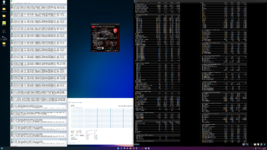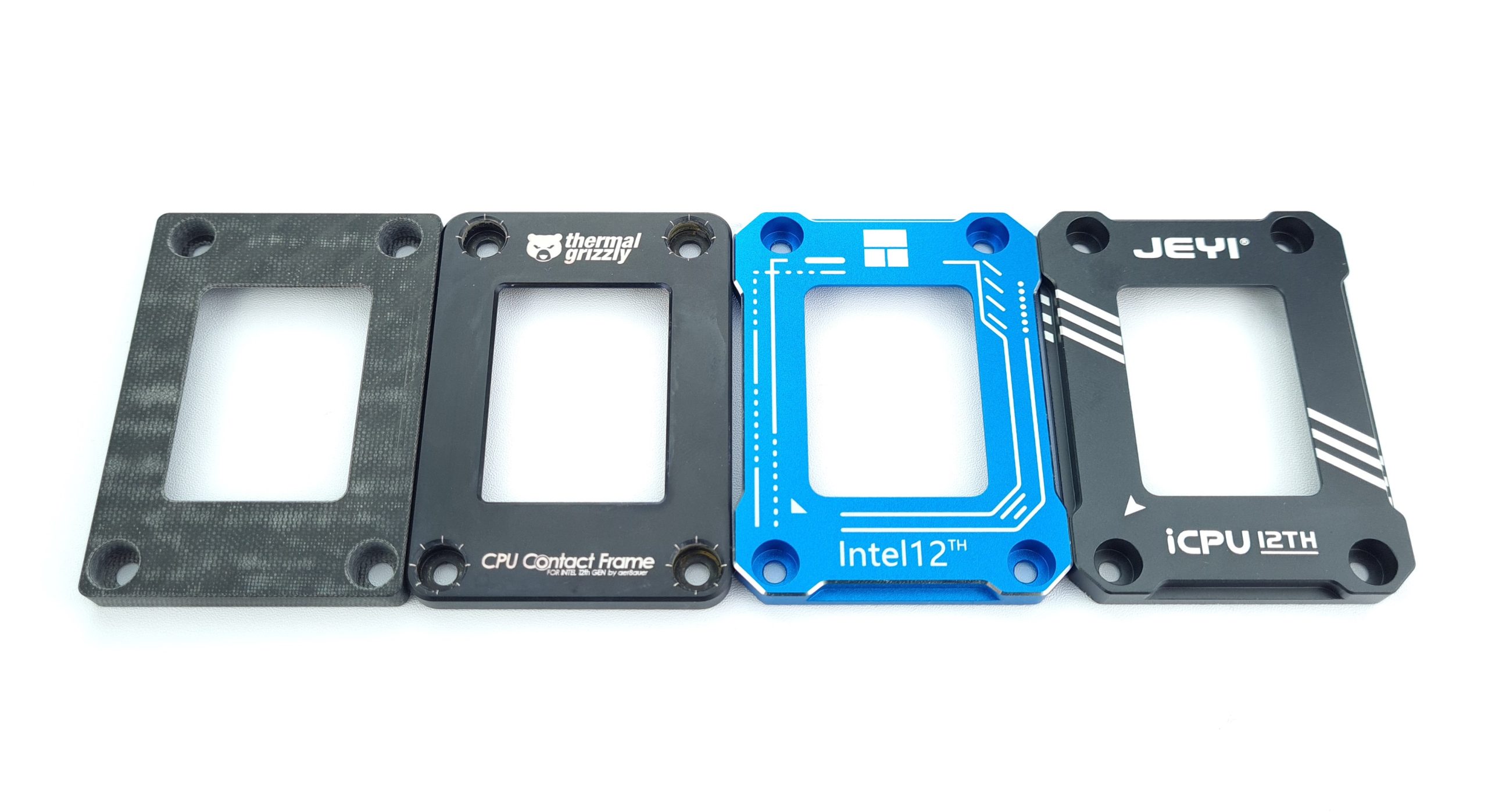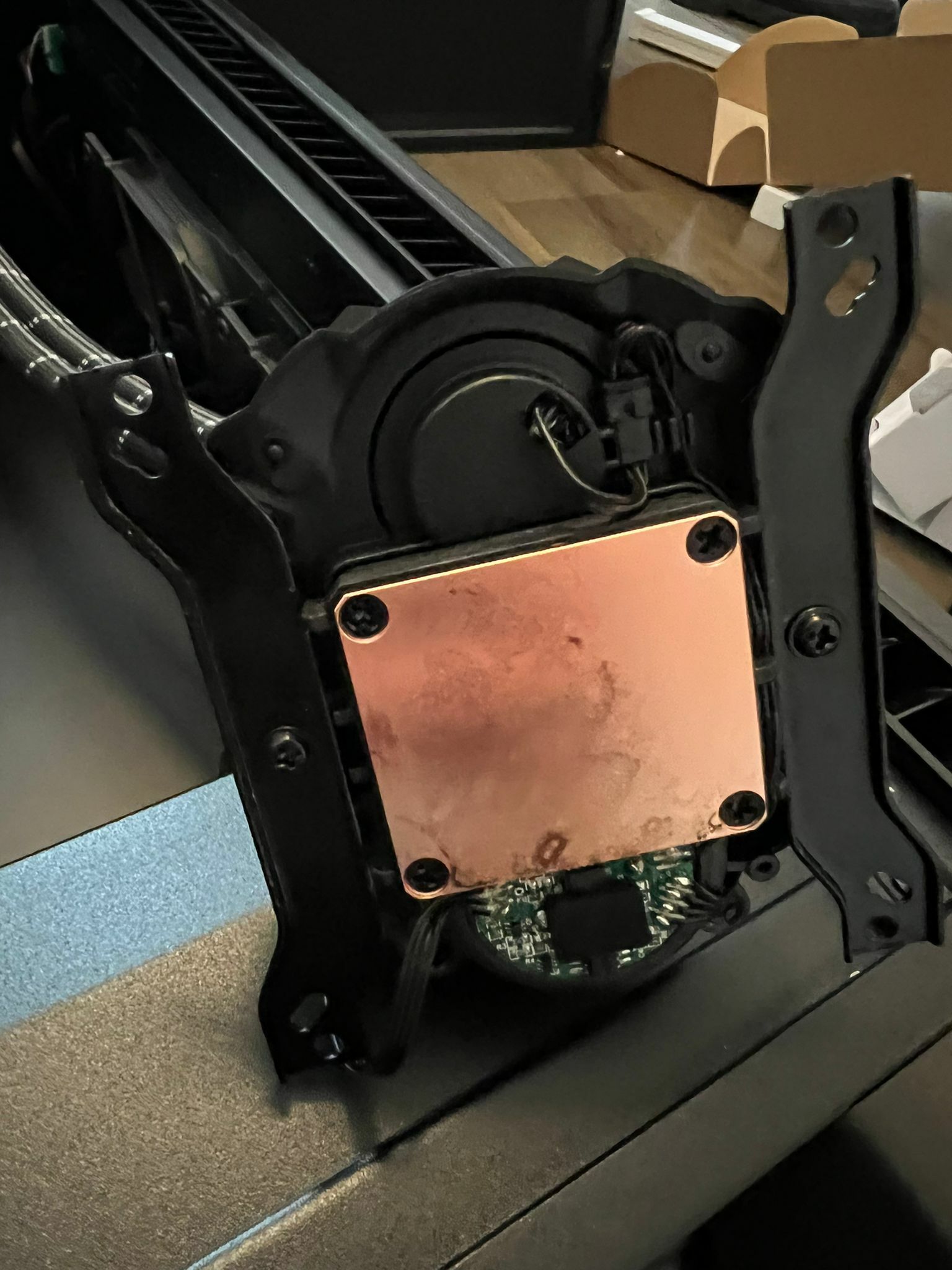Now I know why so many ohms for AC will massively increase the voltage. U=R x I

. Higher resistance gives more voltage.
Even the BIOS was ultra slow at 1,732 V. I've heard that the CPU clocks down massively with that much voltage. That's probably where it comes from.
Still, I think it sucks from the Asus board that it doesn't warn. Values exceeded by a factor of at least 60, but values remain white.
Could someone please answer my remaining questions in post 4027?
I am particularly interested in why the CPU is still alive and whether other components have also been damaged in terms of voltage.
Does the AC/DC load line really only and exclusively affect the Vcore or will the VRMs of the mainboard also be affected?
@
IronAge
Oh, then I'll leave it. Overclocking doesn't really work without MoRa Bomber anyway. And if a CPU is crippled, you will notice it even without an SP rating

.
I ordered new 0.8 mm polyamide washers for my Washermod. Unfortunately, the metal things were not straight. More like a cone. Probably from punching.
Also, due to the dangerous metal, I tightened the screws just a tad by hand. I don't want to damage any traces or even the coating.
Unfortunately, the 8auer frame (Thermal Grizzly Contact Frame) is no longer available

.
AC Loadline functions differently on Z490 and newer than it did on Z390 and older.
First, ACLL affects CPU VID. On manual vcore, CPU VID is ignored because you are setting vcore manually. On Auto vcore, or "adaptive mode", ACLL will be used.
(and other parameters, like voltage +/- offset, or v/f etc on Z490+)
On Z390 and older, AC Loadline would raise the base "VID" of the CPU, depending on how much current it is pulling. Then "VRM Loadline", which is also known as "LLC" or "Loadline calibration", or "Vdroop", would drop the final voltage in the end. Let's say you were using an AC LL of 1.6 mohm and a loadline calibration of intel "spec" vdroop (Asus=LLC3, MSI=LLC6, Gigabyte LLC= "Normal" or "LLC Standard", ok? so ACLL and VRM LL would be the same mohm (1.6 mohm. so chip is 9900K ok?)
for example if your CPU was pulling 190 amps, and base VID was 1.30v, and 'thermal velocity boost voltage optimizations" was disabled (long story, on the older platforms, TVB Voltage optimizations would 'raise' base VID as temps go up, and reduce base VID as temps go down. TVB Voltage Optimizations=disabled would set the base VID as if the CPU were at 100C (if this were enabled). ANYWAY....
convert volts to millvolts:
1300mv + (190A * 1.6 mOhm)= 1604mv or 1.604v CPU "input" voltage. IF MAX VID "SVID OFFET" IS ENABLED. (Gigabyte disables this by default on Z390, Asus enables this by default on Z390). If SVID OFFSET is "DISABLED", max VID will be 1.520v or 1520mv no matter what.
So...1604mv if SVID OFFSET is enabled, 1520mv if SVID OFFSET IS DISABLED.
Then we factor in vdroop from Loadline Calibration (1.6 mOhms).
So... 1604mv - (1.6 mOhm * 190 amps) = 1300mv or 1.300v load voltage final load voltage.
If SVID OFFSET IS DISABLED:
1520mv - (1.6 mOhm * 190 amps) = 1216mv or 1.216v load final voltage.
So on Z390 and older, AC Loadline is the "Inverse" of LLC---ACLL boosts "input voltage" by amps * mohms of ACLL value, then loadline calibration (LLC / VRM Loadline) drops it back down.
Also, this means that if your CPU is only pulling 0 amps, ACLL at super high mohm (example, 2.1 mohm), it will still be "Base VID" (1.3v or maybe 1.31 or 1.33). but very low if pure idle.
This looks really good, but the problem is, ACLL cannot compensate fast enough for something called "Inrush current".
You may get a huge current change (no load to high load super fast, instead of "constant" load, and ACLL may not react fast enough to raise input voltage to compensate. Then your input voltage may be too low for a few milliseconds (Forever in computer terms!), and you BSOD because your load voltage may be too low (maybe 1.23v, when you need 1.30v to be stable, e.g. i9 9900k @ 5.1 ghz).
However this was changed on Z490, Z590 and Z690.
On Z490/Z590/Z690, AC Loadline adds some sort of "fixed offset" to the voltage immediately (so, no more problems with "inrush current anymore".
So now...if your base VID is 1.30v....if your AC Loadline is 1.7 mohm....BIOS voltage (0 amps) will be 1.6-1.70v !!!!!!!!!!!!!!!!!!
But I dont know how this 'offset' to base VID works. We tried to find the formula but we could not. It's difficult on Z490-Z690.
1.732v you had is bios limit. for LN2 mode disabled=1.72v.
You are lucky.
if you had LN2 mode enabled, and you set 60 mOhm for ACLL, your CPU would be 2.1v in BIOS and would probably die permanently, instantly. or never work again.
So, AC Loadline should never be higher than 0.6 mohm for air or AIO, ever. ACLL 1.1 mohm and adaptive/auto voltage will almost always be 1.5-1.6v in BIOS unless your CPU VID is very low (like 0.9v or 1.0v, at low mhz, like 4200 mhz).
DC Loadline is "Prediction" of vdroop. DC Loadline does not change actual voltage or vcore at all. It makes "Reported VID" droop, same way as "LLC" or "Loadline calibration" makes VCORE droop. So you can set DC Loadline to 99 mohms and it does nothing, but...I think "CEP" will look at this and will react on final VID, and if VID is too low for the CPU mhz, will "throttle" the chip if CEP is enabled in BIOS (MSI boards enable this by default on Z690, Asus disables this by default).
DC Loadline set to 0.01 mOhms (1 on MSI and gigabyte boards) will set VID at AC Loadline value with no vdroop at all for predicted VID.






 . Higher resistance gives more voltage.
. Higher resistance gives more voltage. .
.